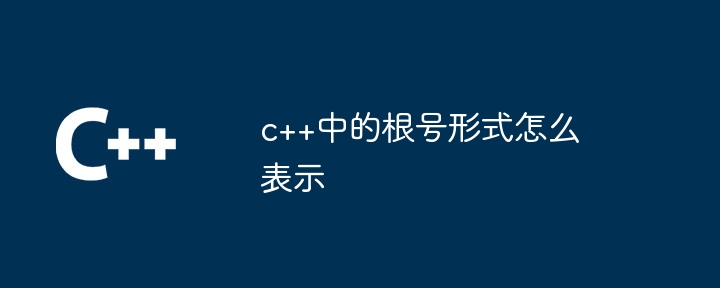Home >Backend Development >C++ >How to express the root form in c++
How to express the root form in c++
- 下次还敢Original
- 2024-05-01 11:24:15955browse
There is no symbol directly representing the root sign in C. You can use the following methods to implement it: use the pow() function and set the exponent to 0.5; use the sqrt() function and include the <cmath> header file; use approximate values , such as Newton iteration method and binary search; use external libraries, such as Boost library.

C represents the root number
There is no symbol directly representing the root number in C. However, there are several ways to implement similar mathematical operations:
1. Using the pow() function
pow() The function can calculate Any power of a number. To calculate the radical, just set the exponent to 0.5:
<code class="cpp">double x = 16.0; double square_root = pow(x, 0.5); // 计算 x 的平方根</code>
2. Use the sqrt() function
C There is no built-in sqrt in the standard library () function. However, it can be accessed by including the <cmath> header file:
<code class="cpp">#include <cmath> double x = 16.0; double square_root = sqrt(x); // 计算 x 的平方根</code>
3. Using approximations
For some values, it is possible Use approximation to calculate the root:
- Newton iteration method: This is an iterative algorithm that can continuously approach the root.
- Binary search: This is an algorithm that finds the root through repeated guessing.
4. Using external libraries
There are many external libraries that provide the sqrt() function or other methods for calculating the root. The most common one is Boost Library:
<code class="cpp">#include <boost/math/special_functions/math_special_functions.hpp> double x = 16.0; double square_root = boost::math::sqrt(x); // 计算 x 的平方根</code>
The above is the detailed content of How to express the root form in c++. For more information, please follow other related articles on the PHP Chinese website!

